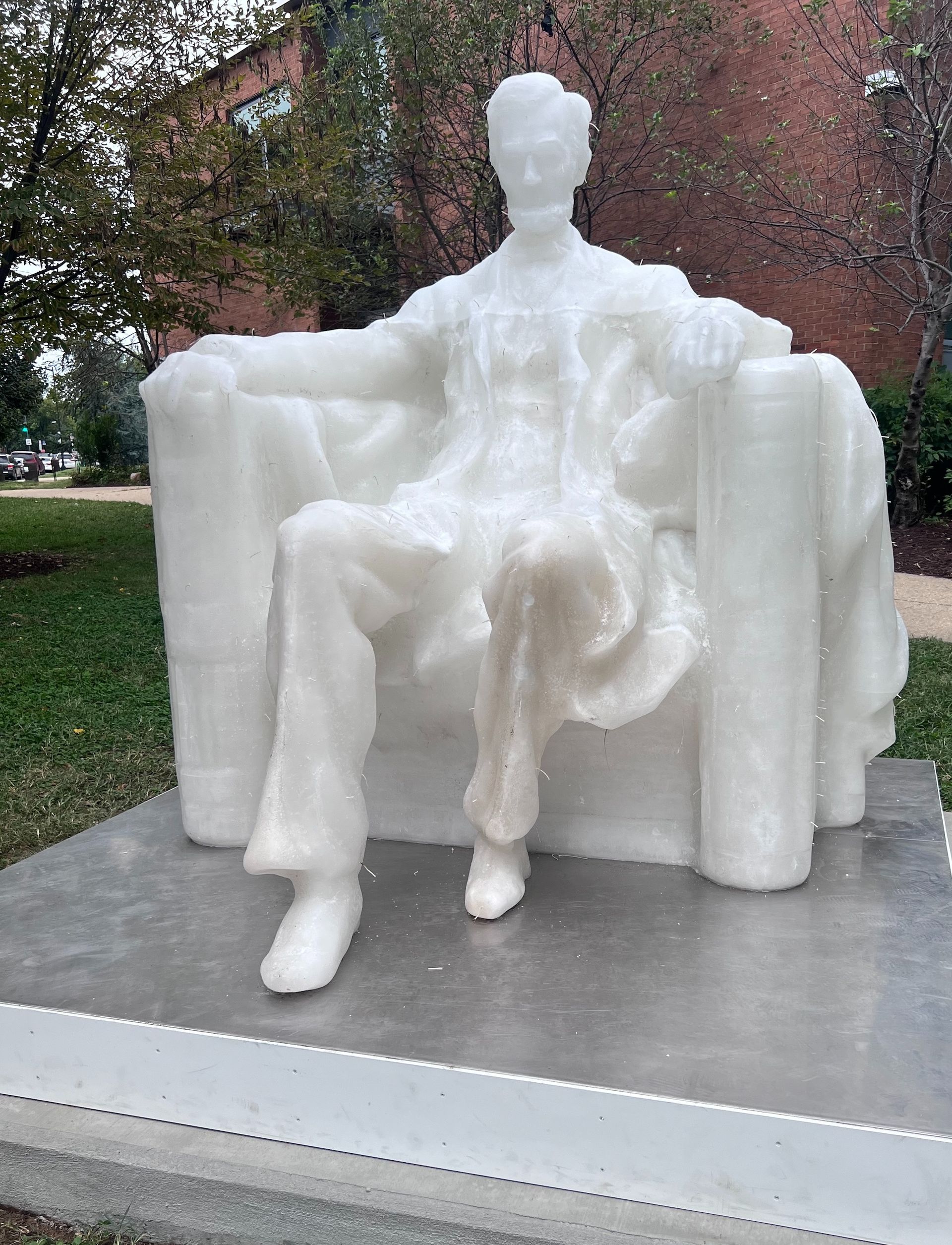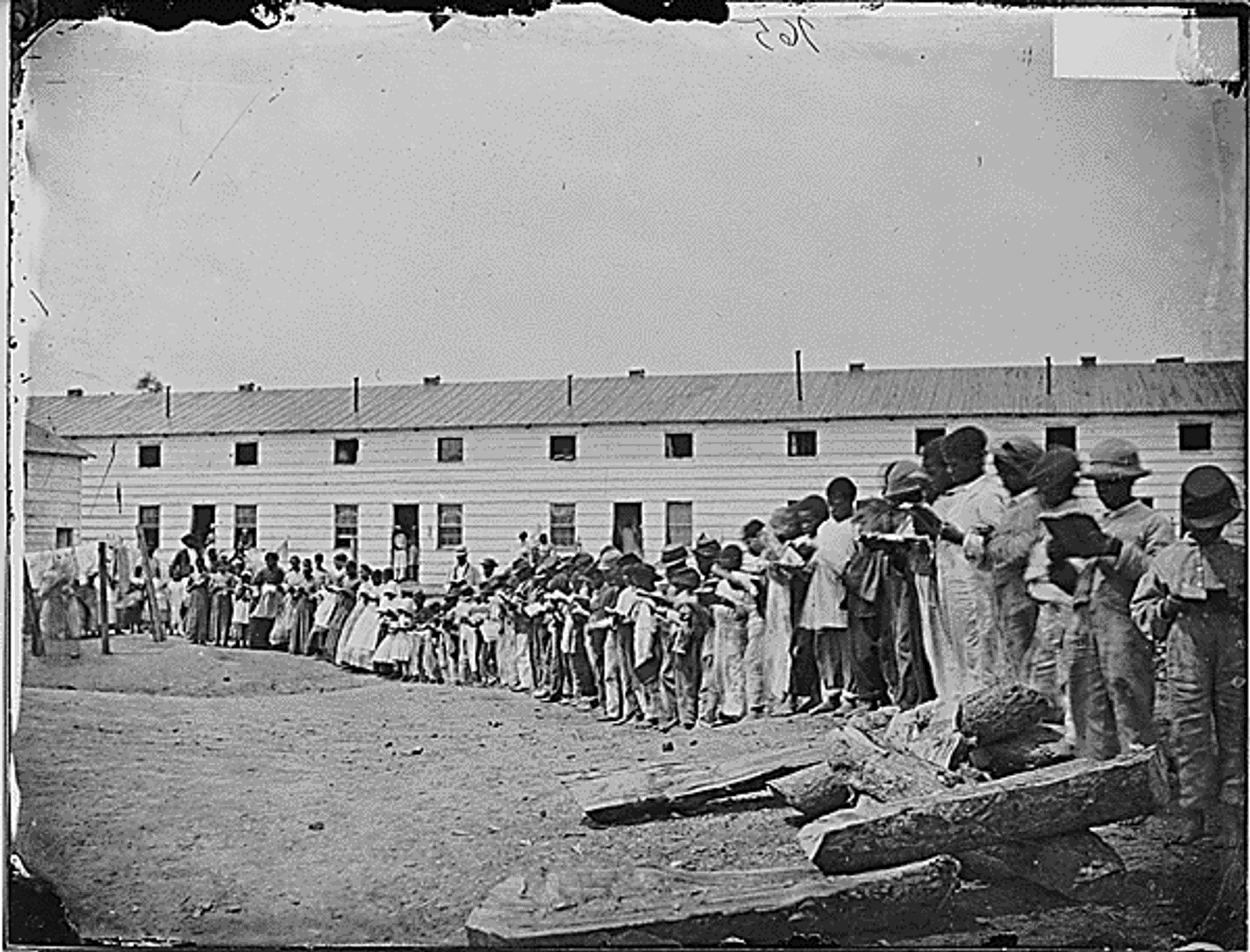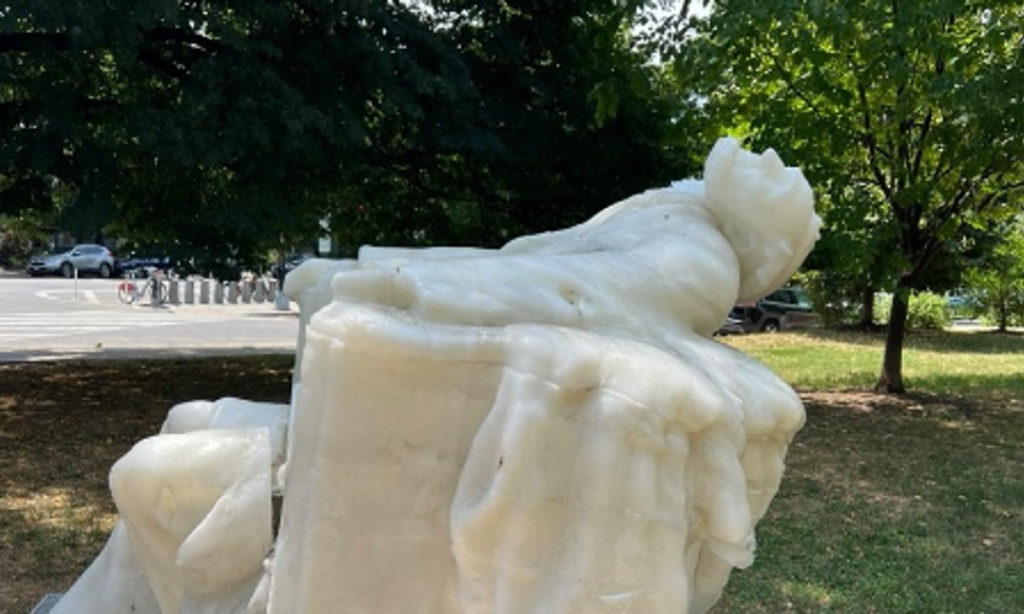Last weekend, in the midst of Washington, DC’s heat wave, a wax replica of the Abraham Lincoln Memorial installed on the lawn of Garrison Elementary School (just a couple miles northeast of the actual monument) started melting.
As the figure of Honest Abe sunk into his chair, his head slowly bending backwards, humorous photos of the sunstruck president started popping up on social media. Even the commissioner of the public-art project, CulturalDC, got in on the joke, posting an update on its website that reads: “Whether it’s the state of the union, the upcoming election or this record-level heat, we are all over it!” and “All that wax is leannnnnnnning back under the weight of 2024 and the state of our warming planet!”
Titled 40 ACRES: Camp Barker, the 6ft-tall, 3,000lb wax figure is a work by the Richmond, Virginia-based artist Sandy Williams IV, who is also an art professor at the University of Richmond. It is the third public installation of the artist’s 40 ACRES Archive: The Wax Monument series—giant wax-candle re-creations of public monuments to people like Robert E. Lee, Stonewall Jackson and Thomas Jefferson, with wicks meant to be lit by the public, transforming the sculptures over time.

Sandy Williams IV’s 40 ACRES: Camp Barker (2024) before the heatwave Photo: Courtesy CulturalDC
Williams has described their work as a means of creating “moments of communal catharsis” by uncovering “hidden legacies in common spaces”. The artist also makes smaller versions of their monument candles and sells them on their website for between $40 and $300.
“Traditionally, monuments are made to sit and collect a patina, as they withstand change, in an attempt to eternalise a particular reality,” Williams writes of their project. “I am interested in visualising change, and building monuments able to keep a living record of activity. By melting these wax versions of famous monuments, people are given agency over these forms that are normally (legally) untouchable.”
40 ACRES: Camp Barker takes the first part of its name from the unfulfilled promise after the US Civil War that formerly enslaved people would receive “40 acres and a mule” as a form of reparations. The second part refers to the “contraband camp”—a refugee camp for formerly enslaved people during the Civil War—that used to occupy the land where Garrison Elementary now stands. Camp Barker was “the largest freedmen’s community in DC”, according to the artist, and President Lincoln, who was responsible for establishing it, would often stop by and visit with the people who lived there.

Residents of Camp Barker prepare for Abraham Lincoln’s visit in this photograph by Mathew Brady, taken around 1860–65 Courtesy National Archives and Records Administration
Installed at the school in February, this was the second iteration of Williams’s Lincoln sculpture. The first, which was placed on the lawn last September, met a similar fate of melting—albeit under very different circumstances.
“The first one we made had, like, a hundred wicks,” Williams told Matt Stieb at New York Magazine. “It was not meant for people to light them all at once, but before we had our unveiling and explained the intended community engagement, people found the sculpture without any sort of prompt. They just noticed it had wicks, then they lit all of the wicks and left it melting for days. So when we came back to have the unveiling, it was already half-melted and headless. We were asked to recast and make a second version that only had ten wicks.”
Williams was surprised that this new version of 40 ACRES: Camp Barker, made of wax with a melting point of 140°F (60°C), was so thoroughly liquified by the weather.
“I always joked that when the climate got worse, and we were living in weather hot enough to melt these sculptures, that this work would then become environmental art. I did not expect for that day to be this past weekend,” they told Newsweek’s Marni Rose McFall. “Something in the universe bigger than me has now melted this sculpture twice, and I think it was important that these were unplanned public events versus staged gallery or museum performances.”
While the sculpture is scheduled to stay at the school until 30 September, Williams and CulturalDC are letting Garrison Elementary’s principal decide whether to remove it early.
“Our staff has purposely removed Lincoln’s head to prevent it from falling and breaking,” CulturalDC notes in the project update on its website. “We can’t guarantee he’ll be sitting up straight for the months ahead, but who really will be?”


